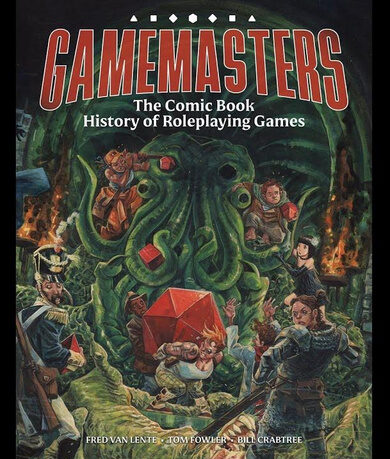We may earn money or products from the companies mentioned in this post.
Chapter 7 is mostly a refresher course on concepts that have already been introduced (ability scores and modifiers, advantages, and disadvantages, and proficiency bonuses) but with more in-depth explanation and a clear description of how they fit together: Roll a d20, add your ability modifier, add your proficiency bonus if you have an appropriate proficiency. If you have an Advantage, roll d20s and pick the best. If you have a Disadvantage, roll d20s and pick the worst. I’m not sure if the idea of comparing the roll to something has been mentioned before, but this chapter does describe that you compare your roll to either a Difficulty Class or an opponent’s roll. Otherwise the bulk of the chapter is spent describing skills and how they work, which includes rules for passive skill use (detecting a secret door even when you’re not actively searching for secret doors) and characters combining their efforts on a task. They also slip in what may be the simplest version of encumbrance yet (though it still requires you to tally up how many pounds of iron rations and arrows your character is carrying) in the Strength section.
Thoughts on Chapter 7:
- Since you you mostly just use the bonus derived from your character’s ability scores, the game designer part of my brain is wondering why they even bothered to leave ability scores in as a separate entity rather than reducing them to their bonuses. The former D&D player part of my brain knows the answer: because the 3d6 (or whatever) ability score range is a fundamental part of D&D. Removing it, even if it doesn’t serve much purpose, would make the game feel less like D&D to 99% of the people who have ever played the game before. After all, it’s the first RPG rules concept a lot of people ever learned. A fighter with a Strength of +3 belongs to some other game. Your D&D fighter has a Strength of 16. That’s the way it’s always been and the way it will always be.
- As I suspected, all skills have the same bonus (the proficiency bonus, which is based on level). So if you’re a 5th level Druid with skills in Acrobatics, Animal Handling, and Intimidation, you’re equally good (+3) at Acrobatics, Animal Handling, and Intimidation even if you’ve been handling animals since first level but just learned how to do somersaults when you levelled up last week. While this does simplify the rules, I don’t think the simplification is worth the loss of fine character detail.
- Speaking of skills, remember non-weapon proficiencies like “Kite Flying”, “Fungus Identification,” and “Cheese Making?” That’s all gone. The 5E skill list has 14 entries, most of them broad abilities like “Athletics” or “Nature” (which doesn’t include “Animal Handling,” probably the narrowest skill on the list). The focus is clearly on “useful” skills that are likely to come up in the game, and to be honest I’m torn on how I feel about this. On the one hand, I agree with this way of thinking, in fact I’m using the idea in the game I’m working on (Cinemechanix, for those of you who found this blog recently and have seen only this review for months on end). Cinemechanix players are frequently reminded that there are thousands of things your character can do that don’t need game mechanics because you’ll probably never need to roll for them. If you want your dwarf to yodel then fine, your dwarf can yodel. On the other hand, even though this version goes farther than any before in suggesting that there’s more to a character than his stats, I’m not sure D&D is quite ready to take those training wheels off. I’ve seen too many players who came into role-playing through D&D have trouble with more open-ended systems because they’re used to having all the character’s options right there on the character sheet with numerical values next to them. I’m afraid that with some groups my dwarf isn’t going to be able to yodel since there’s no yodeling skill.
- Saving Throws are basically now just ability checks except that each class is proficient in certain types of saving throws (and therefore add their proficiency bonus). I’ve got a feeling that the latter part of the rule is just there to distinguish them from regular ability checks in order to keep the concept of a Saving Throw alive. Unlike the 3-18 atribute range, I’m not sure Saving Throws are essential to keep around.
Since both this chapter and the next one (Chapter 8: Adventuring) are short, I was originally going to review them together, but I gave in to fear. The Adventuring chapter is traditionally where all the really tedious stuff like torchlight radii and encounter distances (we called the corresponding chapter in Qerth “Incredibly Boring Minutiae”). Even though this edition seems to be tending toward simplicity and I’ve (hopefully) already made it through the encumbrance rules, I’ve got too many traumatic memories from past “Adventuring” chapters to dive into it without a nice big cup of the kind of late-night truck stop coffee that tastes like it was filtered through Death’s gym sock but will keep you awake through anything (even the “Movement Rate By Terrain Type” table).






